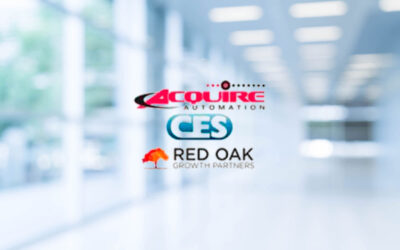Now that the case for a digital transformation has been made and the go ahead given, it’s time for your supply chain software implementation…but don’t think it will be a walk in the park. It’s common to have a bit of friction between company departments – especially during transformations. Stamp out ‘turf battles’ early and map out a plan right away, so you can easily course correct when issues or delays inevitably arise. How you define success will also play a significant role throughout the process – don’t overpromise but strive to overdeliver.
Fight your fights early.
Transformations require change, so anyone dedicated to the current system or solution will naturally be resistant to that replacement. Comfort with the known versus fear of the unknown comes into play and, in digital transformations, frictions tend to naturally occur between functional areas, such as operations, finance, and IT. If there’s a growing internal resistance, your project team’s designees will have likely reported negative feedback about the proposed solution from their departments. If and when this occurs, you must be ready to sort out these issues upfront and early.
For instance, the IT and finance departments are commonly comprised of status quo advocates with vested interests, and will therefore likely question transformative change, especially if it’s outside the current system of record. Steadfast believers often evangelize that the system already in place can do everything the company needs it to – especially in larger companies using enterprise systems. It falls on the project team manager to demonstrate that, in fact, the current system is limited and not up to the task.
I encountered this kind of situation while expanding the services of a global organization into reverse logistics. Our customers were keen on crafting what is today known as the circular economy, though my company’s system of record – an ERP platform from a major software provider – couldn’t deliver everything we needed. Despite that, some of the IT functionaries were staunchly against introducing a new platform into the company and didn’t support the effort. We burned a lot of cycles coming to terms before finally hashing it out and moving forward. We had to drive home the shortcomings of our current setup – which couldn’t support the business model we were moving toward.
When you’re dealing with die-hard supporters of near universally revered systems, dispelling the myth of perfection is no easy task. But it’s absolutely necessary for successful software implementation. Every department must understand that this transformation is a must – and why. Fortunately, newer systems, especially cloud-based SaaS ERPs, have been engineered to accept point solution, third-party plug-ins (tax compliance, helpdesk, online marketplaces, talent management, etc.) and may have already developed API’s and connectors to make the integration easier.
Additionally, you can negotiate internal service level agreements between departments, specifically outlining expectations and deliverables, such as milestones and KPIs, to avoid passive aggressive pushback or attempts to slow roll the project.
Map your plan.
Once management gives their approval, they typically expect that the software implementation will move at warp speed. But the reality is not always a “ready-set-go” scenario. Some businesses prefer to tackle their supply chain software implementation all at once – as a “Big Bang” – while others opt to roll out the implementation incrementally, in a slipstream approach. Companies eager to make waves and shift gears tend to choose the first; but going too fast exposes you to greater risk and error. Conversely, a slow rollout prolongs your time-to-value and increases the chances of dropping the project part way or getting distracted and never completing it.
Having gone through both types of organizational change, I’ve found that the ideal method is a combination of the two: A slipstream approach that incorporates total transformations where the changeover in business process can more seamlessly start. For instance, with new customer on-boarding, or bringing up a site rather than an entire region or whole company, or when integrating an acquisition.
Whatever your chosen approach, it takes a village. As we’ve mentioned before, in most organizations, every person has a full plate, but this roll-out can’t be treated as ‘dessert’ or another task on the day-to-day to-do list. To avoid delays, dedicate a separate, full-time team to the task. This will likely include many of your current project team members, as well as others, such as super-users, who can train the rest of the organization. Whichever the approach, you’ll have to run the old and new systems concurrently to ensure the new one runs well before the switchover. Plan for this duplication cost – it’s inevitable and necessary.
Similar to your business case presentation, your team should be aware of the needed resources and timelines for rolling out the transformation throughout the organization. By mapping out your expectations, you ensure everyone is on the same page. Though some companies may choose to outsource a great deal to their provider’s professional services group, I’ve always favored actively engaging and training as many of my own people as possible, so we could be nimbler and more self-sufficient.
Define success through quick wins.
Considering the effort transformational projects require – a special team, vendor interviews, reference checking, internal reviews – it’s common for organizations to hold them under significant scrutiny. Beneath this magnifying lens, it’s important to define success through a series of small, quick wins that show frequent progress and meeting promised deliverables. Converting one location after another, or one customer after another on a regular roll-out schedule, is better than attempting to transform all facilities or all customers at once. Your executive sponsors will appreciate this regular, forward momentum, ratifying their support of the team.
As a former colleague of mine once put it: “Say what you will do, and then do what you say.” Nobody likes surprises – especially in corporate life – so control as much as you can through these small wins, and only make promises you can keep.
It’s not uncommon for organizations to show reluctance in letting go of an old system, and belief in new technology often follows a ‘seeing is believing’ trajectory. When it comes to digital transformations, skepticism and reservation are healthy traits that help prevent bad or rash decisions. Prove the worth of your supply chain software implementation by slowly building confidence in each small, but cumulative success.






